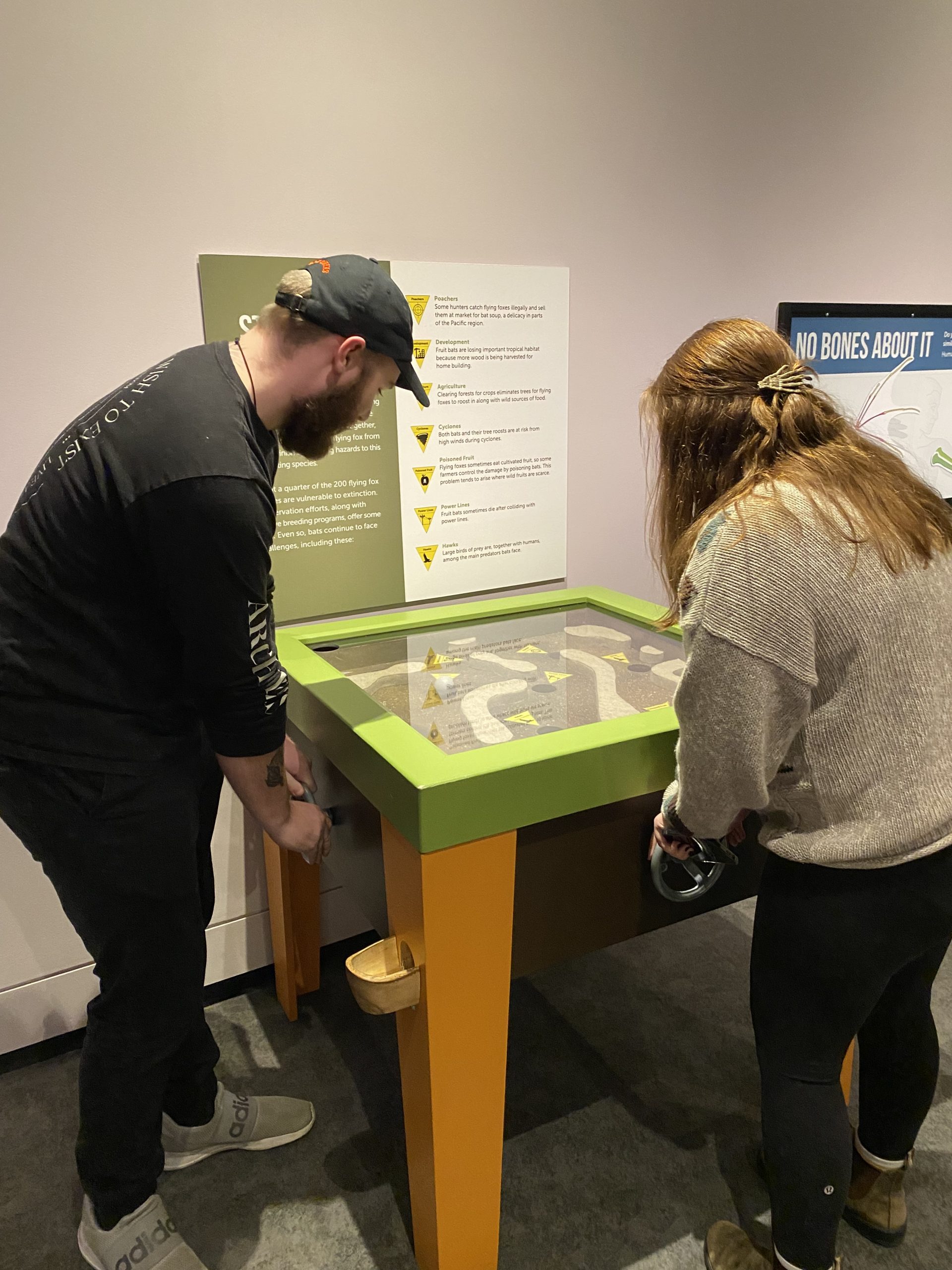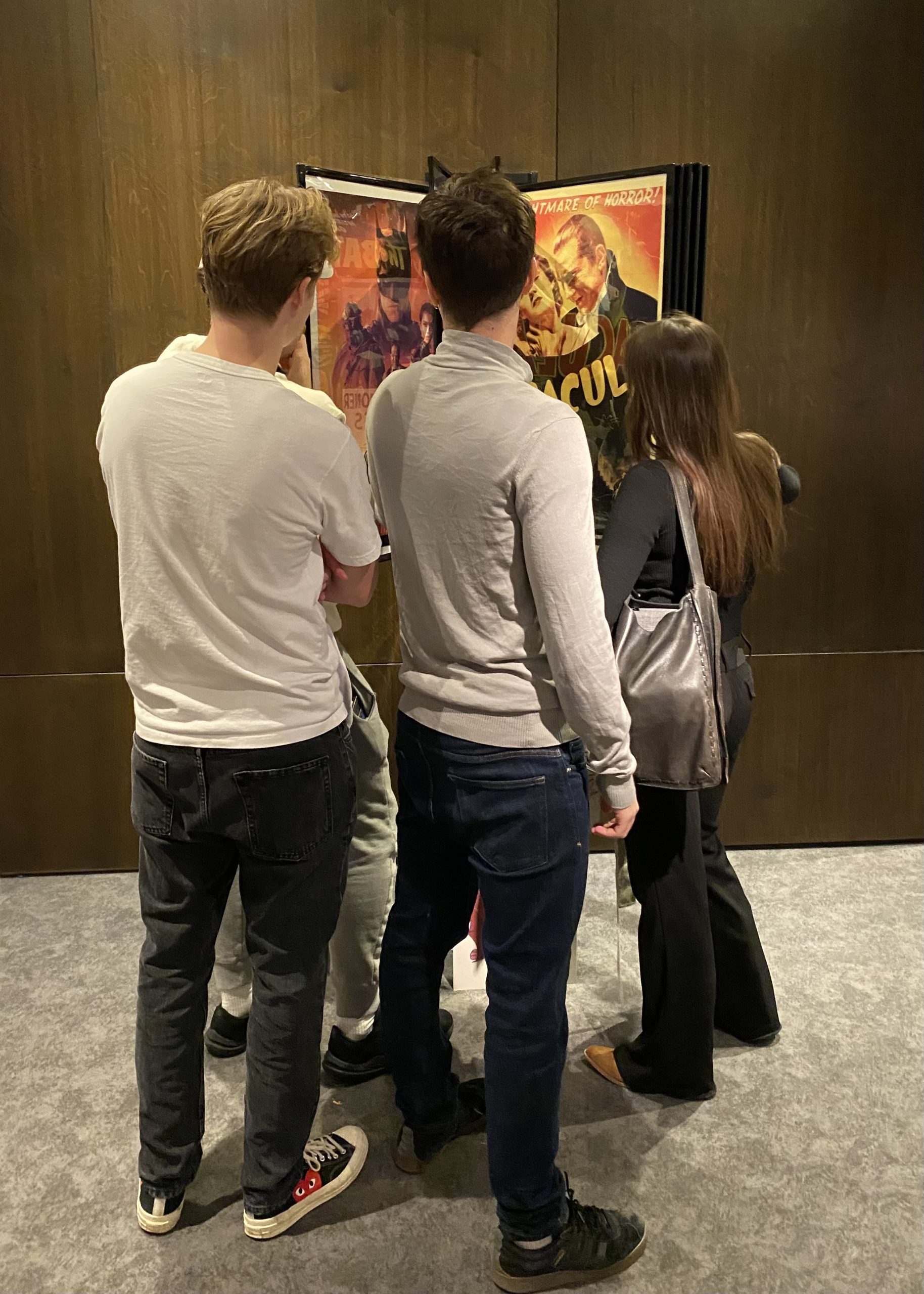Those making their annual pilgrimage to the Witch City this year should make time in between the ghost tours and psychics to visit the Peabody Essex Museum (PEM), located in the heart of Salem, Massachusetts. Though Boston-area residents are often familiar with PEM’s excellent exhibits and programming, visitors might be drawn to spookier attractions. However, one of PEM’s fall exhibits focuses on one of our favorite flying Halloween friends. Bats! provides a family friendly exploration of the often unjustly maligned and misunderstood creatures.
The exhibition was organized and produced by ExplorationWorks! and Build 4 Impact Inc. with assistance from The Dotty Brown Art & Nature Center. Bats! takes an interdisciplinary approach which explores bats in art, science, technology, and cultures across the world. Exhibition curator and Sarah Fraser Robbins Director of the Art & Nature Center, Janey Winchell, states in an interview with PEM that most people know relatively little about bats, but that regardless of their opinion on or experiences with bats, “[…] once people are in the exhibition, they will discover things that relate to them in their own lives.” As a long-time nature nerd and bat lover, I had to see the exhibit for myself and the Peabody Essex didn’t disappoint!
The exhibit is laid out in a non-linear fashion which helped avoid overcrowding in areas of the exhibit space and allowed visitors to explore at their own pace. The exhibit space is broken up by a series of temporary gallery walls, which created unique spaces within the exhibit while still allowing for wheelchair accessibility. Like many other visitors, I entered the exhibit and moved through it mainly clockwise. Ecological and biological facts on bats alternate with art and objects. I enjoyed that the exhibit text included abundant pictures of bats to illustrate concepts while visually pleasing.
Interactives are abundant in this exhibit and hit the rare mark of being engaging for all age levels. Some interactives are simple, such as flip boards for true and false bat facts and “bats around the world.” The bats around the world interactive is interesting and engaging but the text was small and difficult to read. The focal point of the exhibit is a live bat interactive featuring Egyptian Fruit Bats. The bats can be viewed from outside or by crawling in and looking up from inside a plastic bubble. Visitors of all ages enthusiastically crawled through the interactive. Grown adults without children were excited by the prospect of looking up from the tunnel at the bats. However, incorporating living beings into an exhibit always raises issues and questions. The bats weren’t very active and were all huddled together in the corner of the enclosure. True or not, this gave the impression that the bats are not pleased with their current situation. It also made it difficult for visitors to spot them. PEM seems to have anticipated some concern from visitors, including a label, “Frequently Asked Questions About the Bat Colony.” The label clarifies how the bats are cared for and where they came from…to an extent. The label states that the bats are from “Indiana Wild, a conservation and education organization.” I think it would be beneficial to clarify how that organization came to have the bats, whether they were seized from animal trafficking or born in captivity, and why it is not possible to release them. As a visitor, these were questions I had as I grappled with the ethics of displaying live animals. However, the impact of this interactive display cannot be overstated. Visitors connected with bats on a level that would be difficult to achieve otherwise.
Another popular, but less controversial interactive is a table game which represents the threats to bats’ survival. Two partners must tilt a table to shift a ball through a maze, avoiding holes that represent challenges facing bats.  This is a novel interactive unlike any I’ve seen in previous exhibits. The game is well designed, both fun and informative. I learned more than a few things about the threats facing Flying Foxes. For example, I had no idea that farmers internationally poisoned fruit to control predation of their crops! Other interactives include comparing human, bat, and bird bones on a magnetic board and making folded paper bats. The exhibit balances textual elements with interactives nicely, resulting in a dynamic exhibit appealing to visitors of all ages and experience.
This is a novel interactive unlike any I’ve seen in previous exhibits. The game is well designed, both fun and informative. I learned more than a few things about the threats facing Flying Foxes. For example, I had no idea that farmers internationally poisoned fruit to control predation of their crops! Other interactives include comparing human, bat, and bird bones on a magnetic board and making folded paper bats. The exhibit balances textual elements with interactives nicely, resulting in a dynamic exhibit appealing to visitors of all ages and experience.
The textual elements of the exhibit are just as engaging as the spectacular interactives. One section of the exhibit covered perceptions of bats across space and time, covering Africa, Asia, and the Americas. I overheard one visitor remark on the perception of bats in China, “Bats are considered lucky! I didn’t know that!” Other visitors enjoyed the section on bats in pop-culture, flipping through a series of posters featuring bats in movies and television. My personal favorite as a fan of folklore and history was the section on how European stigma and superstition surrounding bats formed. Spooky 17th century woodcuts of witches and demons with bat wings certainly felt appropriate for the season! “Which Came First the Bat or the Vampire?” explored the enduring connection between bats and European vampire lore. The labels explained complex concepts from culture, religion, and folklore at an accessible level which kept clear of judgment.
My personal favorite as a fan of folklore and history was the section on how European stigma and superstition surrounding bats formed. Spooky 17th century woodcuts of witches and demons with bat wings certainly felt appropriate for the season! “Which Came First the Bat or the Vampire?” explored the enduring connection between bats and European vampire lore. The labels explained complex concepts from culture, religion, and folklore at an accessible level which kept clear of judgment.
If the goal of Bats! is to challenge the stigma around the animal, it’s certainly a success. Two PEM interns acting as docents for the exhibit, Charlotte and Martha, stated that the exhibit has seen up to 1,000 visitors a day, with the lowest attendance still being 200. Charlotte, a student at Endicott College stated, “I generally hear positive feedback […] bats tend to be stigmatized and people’s perceptions of bats have changed positively.” Martha added that people can leave feedback on the exhibit in a notebook near the exit. Flipping through the notebook, I saw glowing reviews of the exhibit, exclamations of love for bats, and even fun bat cartoons! One visitor remarked, “10/10 recommend. respectfully want to boop the bats nose.” I can think of no greater endorsement than a nose boop! The exhibition, Bats!, attempts a multicultural and interdisciplinary exploration of bats in a relatively small package and it succeeds.
Article by: Madeline Smith
MA Candidate, History and Museum Studies
Tufts University ’24
